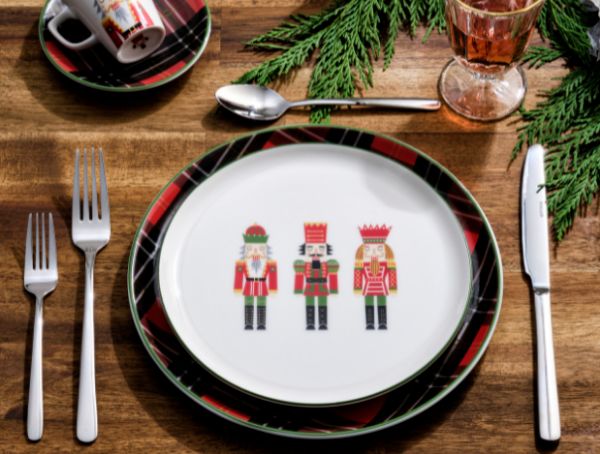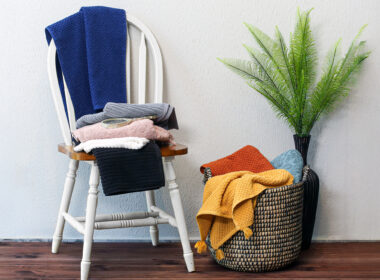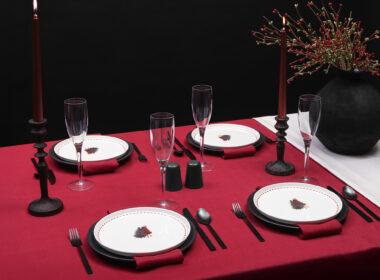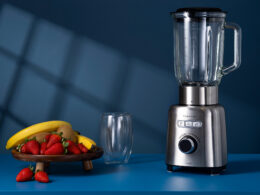Everything you need to know about choosing and using ovenware is here! Discover the right materials, proper cooking techniques, and tips for long-lasting use.
Cooking at home requires as much care and attention as it does flavor. In oven-baked dishes, the material of the baking dish, how it conducts heat, and its structural quality directly affect texture, aroma, and overall doneness. Choosing the right oven dish both makes cooking easier and determines the quality of what arrives at the table.
In this guide, you’ll find everything from ovenware types to usage tips, from what to do before first use to the best cleaning methods.
What Is an Oven Dish and What Is It For?
An oven dish is a kitchen vessel designed to withstand high temperatures and used to cook food directly in the oven. It offers practicality during cooking and helps food heat evenly.
It is commonly used for casseroles, gratins, vegetable bakes, baked pasta, desserts, and meat dishes. By distributing heat evenly, it ensures balanced cooking on both the top and bottom.
Some models are stylish enough to double as serving dishes at the table combining aesthetics and function to make kitchen life easier.
Types of Ovenware: Comparing Glass, Porcelain, Ceramic, and Metal
The material of an oven dish can influence everything from texture to cooking time. Each material has its own advantages and points to watch. When choosing, consider your cooking habits and the recipes you plan to make.
Glass Baking Dishes
Usually made of borosilicate glass, these are heat-resistant. Their biggest advantage is visibility and you can monitor doneness from the outside. However, glass is sensitive to thermal shock: placing a cold dish in a hot oven or setting a hot dish on a cold surface may cause cracks. Avoid sudden temperature changes.
Porcelain Baking Dishes
Porcelain is both functional and elegant. It warms slowly but distributes heat evenly, so the inside and outside cook in harmony. It also retains heat for a long time after baking, which is great for serving. Because sudden temperature shifts can cause cracking, use with care.
Ceramic Baking Dishes
Ceramic promotes gentle, even cooking that preserves natural flavors—excellent for casseroles, vegetable bakes, and meat dishes. Its thicker walls hold heat well for serving. Cook times may be slightly longer than with other materials, and it needs careful handling and storage due to impact sensitivity.
Metal Baking Dishes (Aluminum, Stainless Steel)
Metal conducts heat quickly for faster cooking. Favored for cakes, pastries, and meats, it can create a crisp exterior thanks to even heat distribution. Aluminum is light and economical but may impart a metallic taste; stainless steel is more durable. Sticking can occur, so grease the pan or use parchment.
Which Material Suits Which Dish?
- Gratins & lasagna: Porcelain or ceramic—slow to heat but excellent heat retention for melding flavors.
- Roasts & crisp finishes: Metal—heats fast, giving a crunchy exterior and juicy interior.
- Desserts (e.g., baked rice pudding): Glass—the transparency lets you track the bake.
- Vegetables & casseroles: Ceramic—preserves aroma and natural flavor beautifully.
What to Do Before First Use
Don’t start using a new oven dish straight out of the box—some prep extends its life and improves safety.
- All materials: Wash gently with lukewarm water and a soft sponge to remove dust or residues from production/packaging. Avoid harsh chemicals to protect the surface.
- Porcelain/Ceramic: “Condition” the dish by warming it empty at low heat for a short time. This helps the material acclimate to heat and reduces future cracking risk especially important for traditionally made, natural-body pieces.
- Glass: Avoid thermal shock above all. Do not move a dish directly from the fridge to a hot oven; allow it to come to room temperature first.
Pro Tips for Using Oven Dishes
- Lightly grease the interior before baking to prevent sticking and make cleanup easier especially for cheesy or saucy dishes.
- Start at room temperature. Placing a cold dish into a hot oven can cause thermal shock (particularly for glass and porcelain).
- Use the right heat source. Porcelain and glass are for ovens/microwaves only never on stovetops or open flame. Cast iron or certain metals may be stove-compatible, but not glass/porcelain.
- Cool down safely. After baking, don’t place a hot dish on a cold counter or run it under water. Set it on a trivet or cloth and let it cool naturally to avoid cracks.
Follow these details and your dish should perform like new for many years.
Using Porcelain Ovenware: Reducing Crack and Break Risk
Porcelain stands out for its elegance and even heat distribution, but it can crack if mishandled. To minimize risk:
- Avoid sudden temperature changes; don’t move a chilled dish into a hot oven.
- Place hot dishes on a trivet, not a cold countertop.
- Use porcelain only in ovens and microwaves—never directly on the stovetop.
With these precautions, porcelain ovenware can be used safely for years.
Cleaning and Storage Tips
- Hand-wash with a soft sponge and gentle cleaners for longest life.
- Avoid steel wool and harsh chemicals—especially on porcelain and glass, which can suffer surface wear.
- Dry completely before storing; store vertically rather than stacking tightly.
- To remove stuck-on residue, soak in hot water to loosen before washing.
What to Consider When Choosing an Oven Dish
A smooth, enjoyable cooking experience starts with the right dish. Material, size, and ease of care all matter just like your recipe and method.
- Material Quality
Choose heat-resistant, crack-resistant materials that distribute heat evenly. Porcelain, borosilicate glass, and cast iron are reliable choices for durability and great results.
- Cooking Purpose & Recipe Type
Each recipe needs different time, temperature, and heat distribution.
- Gratins/lasagna/baked pasta → slow, even heat (porcelain).
- Crispy roasts → high heat responsiveness (cast iron/metal).
- Custards & many desserts → see-through monitoring (borosilicate glass).
- Size & Depth
The size of the oven dish should match the number of servings you plan to prepare. Larger families or guest meals require larger dishes, while smaller and shallower models are sufficient for single portions. Depth is also important for layered or saucy dishes, as deeper oven dishes provide better containment.
- Oven Compatibility
Fit the dish to your oven size. In small/mini ovens, choose compact dishes; ensure the sides don’t touch oven walls to keep heat flow even.
- Aesthetics for Table Service
If you’ll bake-and-serve in the same piece, design matters. Pick colors and forms that elevate the table.
- Ease of Cleaning & Care
Non-stick interiors simplify cleanup after rich or saucy bakes. Smooth, wipe-clean surfaces save time and support better hygiene.
Elegant and Safe Oven-to-Table with Porland
Porland’s ovenware stands out not only for baking performance but also for table presentation. Designs that go straight from oven to table bring modern elegance to your kitchen. With healthy materials, heat resistance, and long-lasting build, Porland dishes are ideal for style-forward kitchens that won’t compromise on function.
If you seek both practicality and refinement, explore the Porland Ovenware Collection to add a touch of elegance to your table.
Frequently Asked Questions
Can oven dishes go in the dishwasher?
Many can, but for longest life, hand-washing is recommended—especially for patterned or colored porcelain surfaces.
What’s the difference between glass and ceramic oven dishes?
Glass lets you monitor the bake thanks to its transparency, while ceramic offers slower, more even cooking and tends to preserve flavor well.
Can I use an oven dish on the stovetop?
No. Oven dishes are for ovens and microwaves only. Using them on the stovetop can cause cracking or even bursting.
Why do oven dishes crack?
Most cracks are caused by sudden temperature changes—for example, moving a chilled dish into a hot oven or placing a hot dish under cold water. Avoid thermal shock to prevent damage.













